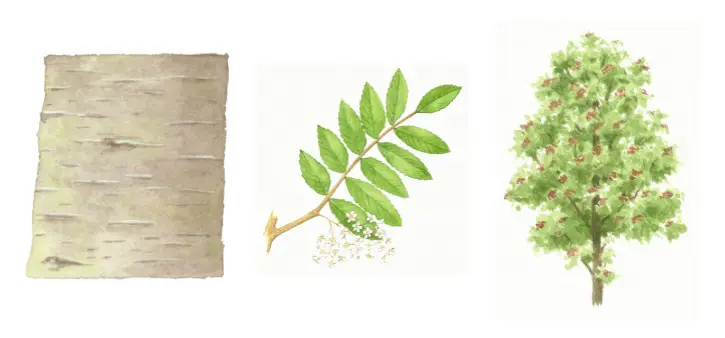Rowan
Rowan

The mystical, distinctive rowan tree is found higher in the mountains than any of Scotland's other native trees. Its botanical name is Sorbus aucuparia and it’s often called the ‘mountain ash’ despite having no relation to the ash tree.
In the past, superstitious residents planted rowan trees outside houses and in churchyards to ward off witches. And more recently, this favourable tree came second to the Scots pine in the running for Scotland’s national tree.
Facts and stats
- Lifespan: 120 years
- Height: The rowan is a graceful narrow tree, that grows up to 15 metres tall.
- Leaves: 11–15 toothed leaves cling to each branch head. These turn red during the autumn months.
- Fruit: The bright red berries provide good autumn feeding for many birds, especially migrants from Scandinavia.
- Flowers: The rowan has flat heads of cream coloured, heavily scented flowers.
- Bark: Its bark is smooth and a purplish- or grey-brown.
- Insect species it supports: 58
- Native to: Northern Europe
- Uses: Its strong flexible wood was used for making tool handles and sometimes longbows. The rowan’s red berries have a high vitamin C content and were made into a drink to combat scurvy. They are still used today to make a jelly to accompany meats.
Famous rowan trees in Scotland
The loneliest tree in Scotland
A solitary rowan tree stands defiant on windswept Rannoch Moor, just visible from the busy A82 between Glen Coe and Bridge of Orchy. Its roots cling to a giant, lichen-covered boulder and its weathered crown testifies to its resilience against harsh conditions. Experts believe the survival of this specimen is due to its elevated position - beyond the reach of hungry sheep and deer.